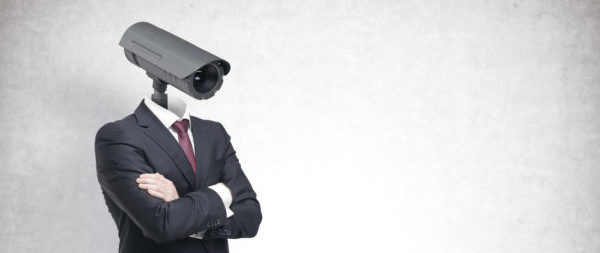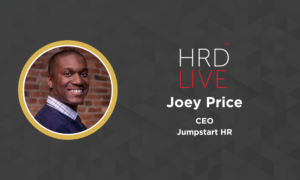Is it right for leadership to ‘spy’ on employees? With Dave Ulrich
- 5 Min Read
22% of global organisations are now using employee-movement data to track their employees’ movements around the office. HRD Connect and Dave Ulrich examine the growing trend of employee observation technology and ‘navigating paradox’ as an essential skill for business leaders in the digital age.
- Author: Michael Hocking
- Date published: Aug 19, 2019
- Categories

At what point does observation become surveillance? It’s a question we’re often faced with in our day-to-day lives. Concerns about the ubiquity of public CCTV, which were rife in the early 2000s, now seem quaint in comparison to our fears regarding online privacy, and the self-perpetuating mantra of, ‘Those who have nothing to hide, have nothing to fear’.
What impact does this have in the workplace? Monitoring employee behaviour is, of course, nothing new. Businesses survive on the success of their employees, and their dependence on employee performance necessitates a certain level of assessment. From this necessity we took performance development plans, KPIs and the ever-changing nature of employee-manager feedback.
However, in recent years, new technology has expanded the capabilities of employee assessment to include a wide range of behaviours. Emerging technologies like biometrics, sensors and enhanced communication software, have enabled managers to mine deeper into employee behaviour than ever before.
A recent study by Instant Offices found that 22% of global organisations are now using employee-movement data to track their employees’ movements around the office, while 17% are monitoring data on how employees use their laptops, and 16% are using data on Outlook and digital calendar usage.
Consider Bank of America, too, which had its call centre workers wear sensor-enabled ID badges to track locations, tone of voice, body language and communication patterns. While this might seem invasive, BofA reported some positive findings from their research.
Call centre leaders were surprised to discover that workers who took breaks at the same time as others were happier and completed calls 23% faster than workers who took breaks in staggered shifts. Thus, a simple change in mandatory break times led to a 75% reduction in the call centre’s burn rate and approximately US $15 million annual savings.
Less positive, though, is the feedback from workers of ‘cyborg jobs’ – jobs that require human employees to take on the behaviour and efficiency of machines, and which, according to a 2013 Oxford University study, comprised 47% of total jobs in the USA – which monitor employees’ performance against a rigid and pressured timeclock.
Notable in this aspect are Amazon’s warehouses, which have become notorious in recent years for their approach to employee efficiency. According to Emily Guendelsberger, author of ‘On the Clock: What Low-Wage Work Did to Me and How It Drives America Insane’, Amazon warehouse employees were required to carry a scan gun, on which was an LCD screen listing tasks, and a timer counting down exactly how many seconds there remained to complete each one (as quoted in this article by the New York Post).
“It also tracks your location by GPS — and you take it everywhere with you, even the bathroom,” wrote Guendelsberger. “Failure to stay ahead of the countdown was grounds for termination.”
Guendelsberger also wrote that, during her time at Convergys, her bathroom visits were logged and sent to her supervisor for approval.
There is clearly a conflict here – the balance between maintaining the requisite level of efficiency for a successful business, and entrusting employees with their own agency to get the job done, in their own, comfortable way. Technology optimises the former, but does it impinge on the latter?
This poses an important question for leadership in business. To what extent should business leaders rely on this kind of employee assessment via technology?
Dave Ulrich, author, professor, and leadership expert, ranked #1 business guru by People Magazine, believes this forms part of a more fundamental question about one of the most valuable competencies that a leader must possess, that of “navigating paradox”.
There is an inherent paradox in our uses of this kind of technology, in that it simultaneously makes our lives a great deal easier, while making them rather more complicated below the surface.
“Technology connects and isolates”, says Ulrich, “Technology readily connects people from anywhere, anytime, but it also isolates people spend time on line or phone and not in relationships. And social isolation leads to mortality more than hypertension, drinking, obesity, or smoking!”
“Technology enables customization and infringes on privacy. Technology, as an enabler of digital information, lets many large firms have customized data that tailors services to users, which is good news. But it also invades privacy when doing so.”
“Navigating this paradox requires that employees, or consumers, give up privacy to get particular services – think of cookies, for example. It’s hard to get one without the other.”
Therein lies the challenge. If business leaders are to use such technologies with the intention of helping their workforces to reach their goals, and those of the wider business, there is clearly considerable value in that approach. But is it really so useful that the privacy of employees is a lesser consideration?
“One cannot delegate navigating technology paradoxes to government legislation or corporate governance policy”, Ulrich continues.
“Ultimately, individuals have to be accountable for how they navigate these paradoxes: do I choose to build relationships through social media, or face to face? Do I let others track my lifestyle or maintain privacy?”
“There are personal choices that are not really right or wrong, but we should be conscious of the choices we make and their implications.”
We are all, in this sense, culpable. Leaders, however, must maintain the integrity to navigate these paradoxes with their employees’ interests at heart. But, as our reliance on technology in the pursuit of efficiency grows, perhaps our reservations around this kind of ‘surveillance’ in our organisations will fade. In a future where trust may be determined by blockchain, and commitment by your visits to the bathroom, this kind of employee observation may well become the future of leadership.









